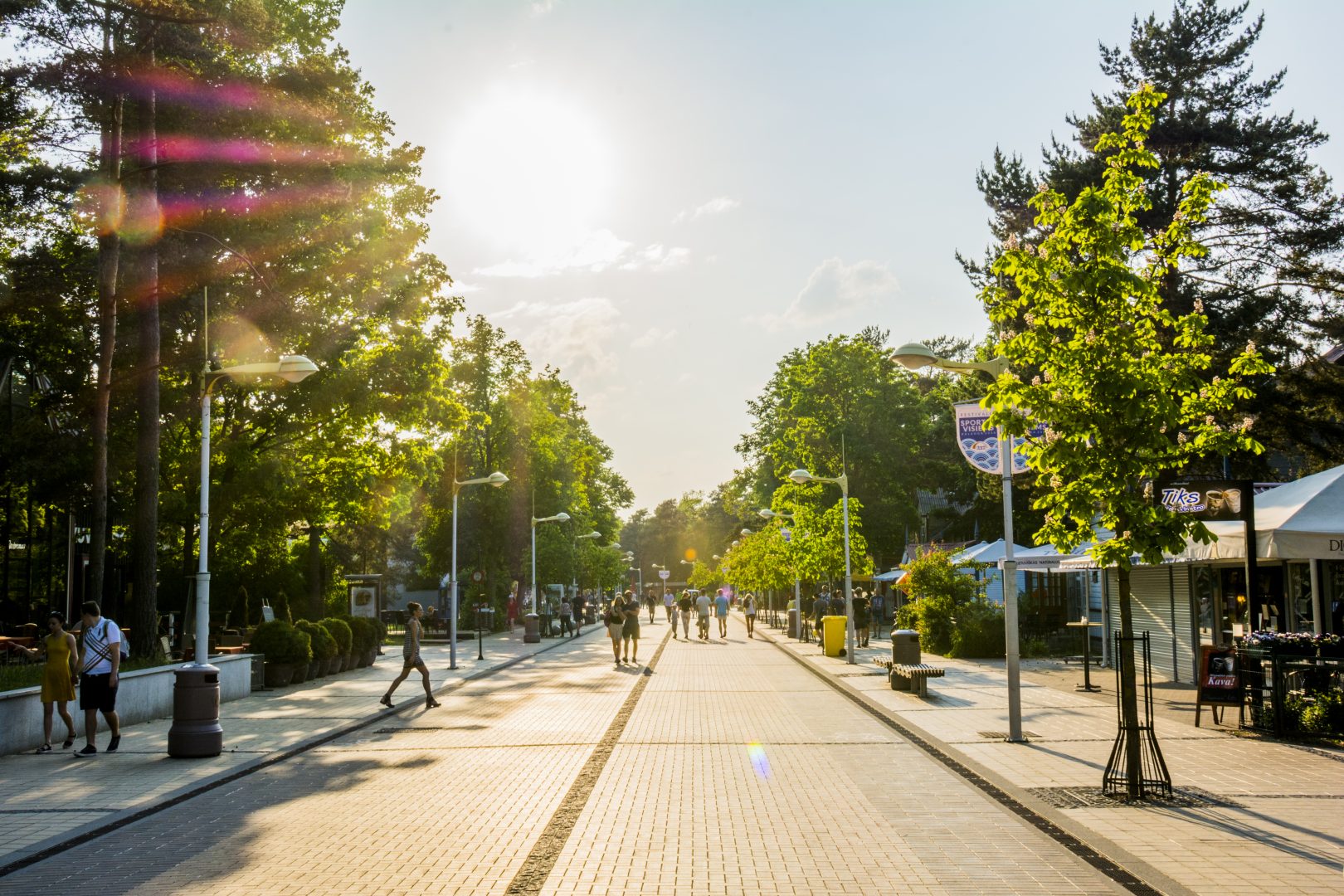When we hear the word "Palanga", the most common associations that come to us are: summer, holidays, sun, blue sea, golden dunes and beaches. In a word, everything we associate with summer vacation. However, on those days when the sky suddenly breaks in the middle of the vacation, and you don't want to leave the house without a warm sweater, or you're just tired of lazing around on the beach, you have to look for other entertainment. Then you can discover the other side of Palanga - the city that was imagined and created by Count Tiškevičius himself.
"We love Lithuania" offers to visit five places that allow you to feel the cultural and historical spirit of the city:
Kurhaus of Palanga
The beginning of the history of the Kurhaus is associated with Count Juozap Tiškevičius, around 1877. who built a spacious building on the corner of the current Vytautas and J. Basanavičius streets, which housed a restaurant, and soon the first Palanga resort hotel. Kurhaus, which translated from German means "holiday house in a resort", has become a popular and favorite gathering place for vacationers. In addition to the restaurant, there was also a reading room, a hall for billiards and other games, dances, performances and concerts were also held here. Kurhauz became the heart of the developing resort.
Today, Kurhauz continues the mission of Palanga's cultural hearth - it hosts various events and concerts. After 2002 after the fire that completely destroyed the old Kurhaus, its brick part has now been rebuilt, and according to the surviving sources, the authentic interior from the time of Count Tiškevičius has been restored. The reconstruction of the wooden part of the Kurhaus decorated with wonderful carvings has already begun.
Palanga Amber Museum
Palanga Amber Museum is located in the impressive XIX century. in the Tiškevičius palace built at the end of More than 4,500 samples of amber and its products can be viewed in it, the exposition is updated every year and supplemented with unique archaeological finds, amber inclusions and other valuable exhibits. In addition to amber, the museum can also be viewed and familiarized with the 19th century. help - 20th century Ave. fragments of the interiors of the Counts Tiškevičiai Palace, the household of the high society of that time.
Palanga Botanical Park
The palace of the Amber Museum is surrounded by Palanga Birutė Park, which was started to be formed in the 19th century. building the palace at the end. The author of the park project is the distinguished French landscape architect E.F. André, who also designed other parks of the Tiškevičiai manors in Lithuania. An interesting detail is that the palace and the park are located in the Birutė forest, considered sacred by the locals. Maybe that's why we feel a special atmosphere of meditative peace in this park?
Church tower
XIV century. the neo-Gothic church of Palanga St. The Church of the Assumption of the Virgin Mary attracts the attention of almost every passer-by with its beauty and grandeur. Once inside, there is also something to admire: an impressive pulpit and three artistic altars, decorated with marble bas-reliefs, from the 17th century. a painted picture of the Mother of God Mary.
The church tower has an observation deck, which opens up a wonderful panorama of Palanga!
Resort Museum or Villa "Anapilis"
Palanga Region Museum is located in the historic 1898 built in a villa with a unique resort architecture that has no analogues in Lithuania. Built as Sofija Tiškevičienė's summer house, in the interwar period the villa became a summer resort for Lithuanian artists, scientists, politicians and even presidents. It used to be a sanatorium club during the Soviet era, after regaining independence it became the most famous seaside music club, and finally, since 2016, it has become a museum of the Palanga resort. The museum regularly hosts exhibitions, concerts, lectures, and cultural events.
